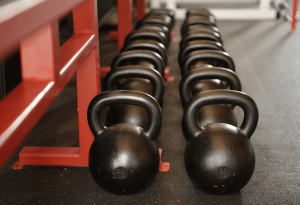EMG amplitude does not reliably reflect muscle fiber activation
To use a muscle, motor neurons (nerve cells) electrically stimulate muscle fibers (muscle cells), called a motor unit. Electromyography (EMG) is a method used in many studies to record this electrical activity (1). The idea is that higher amplitude equals more motor unit activation. However, EMG only measures activity close to the electrode, which may not reflect activity in the entire muscle.
Too much noise
Also, it cannot tell you exactly which muscle fibers have been activated, only how “loud” the electrical “noise” is from fibers close to the electrode. Furthermore, fatigued muscles may give different EMG signals compared to rested ones (2). Greater EMG activation can thus not safely be equated to greater recruitment of muscle fibers.
EMG amplitude is often used to compare how effective various training protocols are, to deem one exercise superior to another. Can higher EMG amplitudes equal better hypertrophy? Probably not. Two studies (3, 4) investigating heavy vs light weight training found lower EMG amplitudes with low intensity training, suggesting that low-intensity training gives less muscle growth. At the same time, studies measuring muscle growth (what we actually care about) find relatively similar muscle growth between high and low-intensity training. What’s going on?
Different activation patterns
Heavy training probably gives a higher EMG amplitude as many fibers stimulated at once. However, light weight training to failure may activate the same fibers, but gradually throughout the set instead of at the same time (5, 6), resulting in a lower EMG amplitude. Both training methods lead to hypertrophy, as the evidence shows.
Lesson learned? Don’t over-analyze indirect measurement results. If hypertrophy is what you want, look at what studies show best hypertrophy, not best EMG activity.
Sources:
1. Massó. Apunts Med Esport. 2010
2. Dimitrova NA. J Electromyogr Kinesiol. 2003
3. Adam. J Neurophysiol. 2003
4. Burd. Appl Physiol Nutr Metab. 2012 Jun;37(3):551–4
5. Schoenfeld. J Strength Cond Res. 2015 Apr 3:1
6. Lamon. J Physiol (Lond). 2009 Apr 15;587(Pt 8):1795–803








